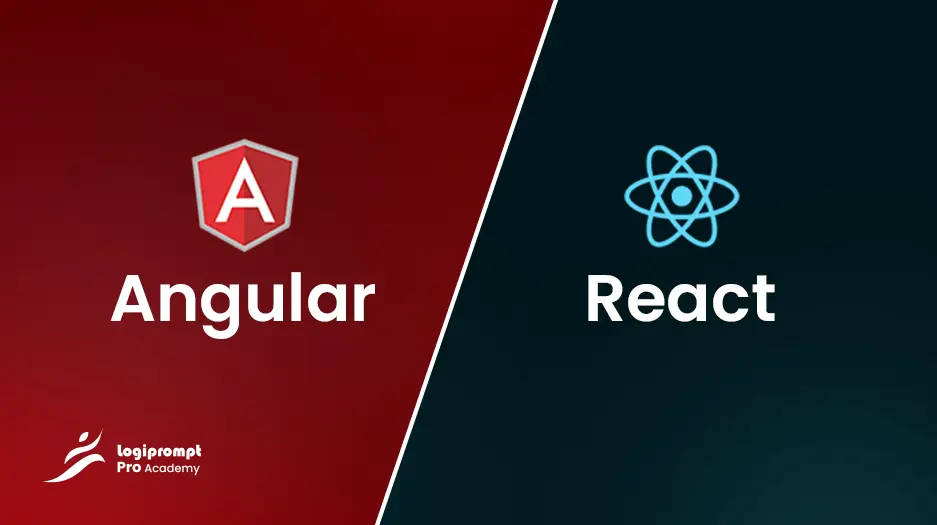Angular vs React
by Vishnu Vijayan (Software Developer) | Updated on December 29, 2023

What is Angular?
Angular is a TypeScript-based, open-source web application framework led by the Angular Team at Google and by a community of individuals and corporations. Angular is a complete 2016 rewrite by the same team that built AngularJS, which was released in 2010. Up until recently, the distinction between Angular and AngularJS was important, because these two frameworks were largely incompatible. In January 2022, Google ended long-term support for AngularJS and entirely discontinued it later in April. This full-fledged framework consists of several libraries, some of them core and some external. Angular provides built-in features such as routing, form validation, HTTP handling, and much more.
What is React?
React is a JavaScript library for building user interfaces, created by Facebook. It was first released in May 2013, and it’s maintained by a community of developers and corporations. React allows developers to create large web applications that use data and can change over time without reloading the page. It primarily aims to provide speed, simplicity, and scalability. The core principles behind React are component-based architecture, unidirectional data flow, and virtual DOM.
Angular vs React: A Thorough Comparison
Angular and React are two of the most popular JavaScript tools for front-end development. They’re both powerful, well-supported, and actively developed by their respective communities. Here are some key aspects to compare them:
| Aspect | Angular | React |
|---|---|---|
| Flexibility | Angular is a full-fledged framework that provides a lot of built-in features. It’s ideal for large-scale projects that require a lot of structure and organization. | React is a library that provides a lot of flexibility. It’s ideal for small-scale projects that require a lot of customization. |
| Development | Angular uses TypeScript, which is a superset of JavaScript. It provides a lot of structure and organization, but it can be difficult to learn. | React uses JavaScript, which is a popular programming language. It’s easy to learn and use, but it doesn’t provide as much structure and organization as TypeScript. |
| Tools | Angular provides a lot of built-in tools, such as routing, form validation, and HTTP handling. | React provides fewer built-in tools, but it’s easy to integrate with other tools and libraries. |
| Data Storage and State Management | Angular uses a hierarchical system for data storage and state management. It can be difficult to learn, but it provides a lot of structure and organization. | React uses a flat system for data storage and state management. It’s easy to learn and use, but it doesn’t provide as much structure and organization as Angular. |
| Performance | Angular can be slower than React because it has a lot of built-in features. | React is faster than Angular because it’s a library that provides fewer built-in features. |
| Documentation and Community Support | Angular has extensive documentation and a large community of developers. | React has extensive documentation and a large community of developers. |
When to Use Angular vs React?
Angular is ideal for large-scale projects that require a lot of structure and organization. It’s also a good choice if you’re already familiar with TypeScript. React is ideal for small-scale projects that require a lot of customization. It’s also a good choice if you’re new to frontend development or if you’re already familiar with JavaScript
Explore & Learn
Embark on a journey of knowledge and discovery with our curated collection of articles, insights, and updates to foster continuous learning and exploration.




